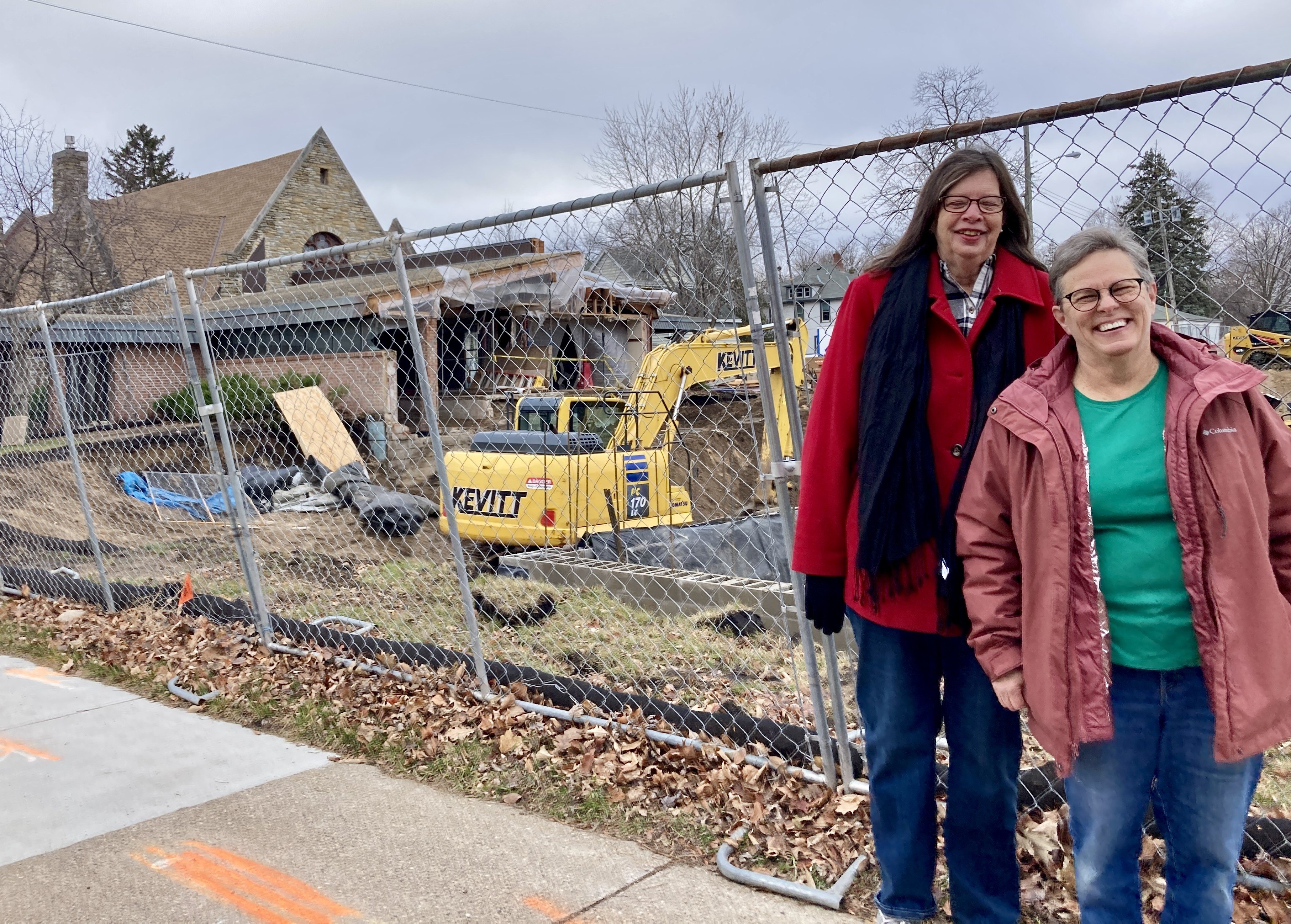
Lynda Stanley, a lifelong member of Union Congregational United Church of Christ, and church moderator Cynthia Budd in front of an affordable apartment complex under construction on former church land next to their church, which is in the background.
When leaders at Union Congregational United Church of Christ decided to renovate their aging building, they didn’t have to look far for the funding they needed.
To raise money, the St. Louis Park church sold some of their undeveloped property to Project for Pride in Living, a non-profit that this year is building 60 affordable housing units on the site.
The site was especially attractive because it sits just three blocks from the METRO Green Line Extension’s Wooddale Avenue Station, providing future renters access to low-cost and reliable transportation.
“There’s a lot of mixed-use development in St. Louis Park, but not a lot of affordable housing,” said Cynthia Budd, Union Congregational moderator. “It was a real good fit for our congregation, and we thought that the location was perfect.”
So did the Metropolitan Council, which supports affordable housing projects through grant funding. A $2 million Livable Communities Act grant and other funds from a Tax Base Revitalization Account will help offset costs for the nearly $30 million Union Park Flats development.
“This grant was key in making the development possible because it was one of the first dollars in and helped to leverage other funding,” said Mandy Pant, Project for Pride in Living’s associate director of real estate development.
The project is one of 35 examples along the Green Line Extension where the Met Council has provided financial support: Since 2011, nearly $35 million has been awarded to projects along the corridor.
Nearly $99 million in Met Council grant funding has separately gone toward 151 projects along the Green Line and A Line, according to a tally included in a new report from Community Development.
“Our grants can help support more equitable development in station areas to help people stay in their neighborhoods and have access to great transit investments,” said Lisa Barajas, executive director of the Council’s Community Development office.
All this activity is bringing more housing and jobs closer to transitways while expanding the local tax base and generating more property tax revenue.
From the TOD Office’s Development Trends Along Transit report:
- Since 2009, 37% of the region’s development has occurred near high frequency transitways, representing $16.4 billion in permit value.
- Regionwide, more than half of new multifamily units affordable up to 60% of the area median income have been built near high-frequency transit over the past decade.
- 83% of deeply affordable units have been located near high-frequency transit. Deeply affordable means up to 30% of the area median income
According to a separate property tax analysis produced by the TOD Office:
- In 2022, the average parcel near high-frequency transit generated $60,000 per acre in property tax revenue – 10 times the regional average of $5,700.
- Land near high-frequency transit accounts for just 2% of the region’s taxable parcels but generates more than 25% of the region’s property tax revenue.
The takeaway, says TOD Senior Manager Michael Krantz, is that transit-oriented development has broad regional benefits.
“The increase in property tax revenue is driven by an increase in the tax base, not an increase in the tax rate,” Krantz said. “In other words, the additional revenue is coming from new projects rather than existing housing or commercial properties.”
Cities can use the additional revenue to make long-needed infrastructure repairs and improvements without raising property tax rates as much or at all on existing properties, even though their property values may have risen as a result of surrounding redevelopment, he said.